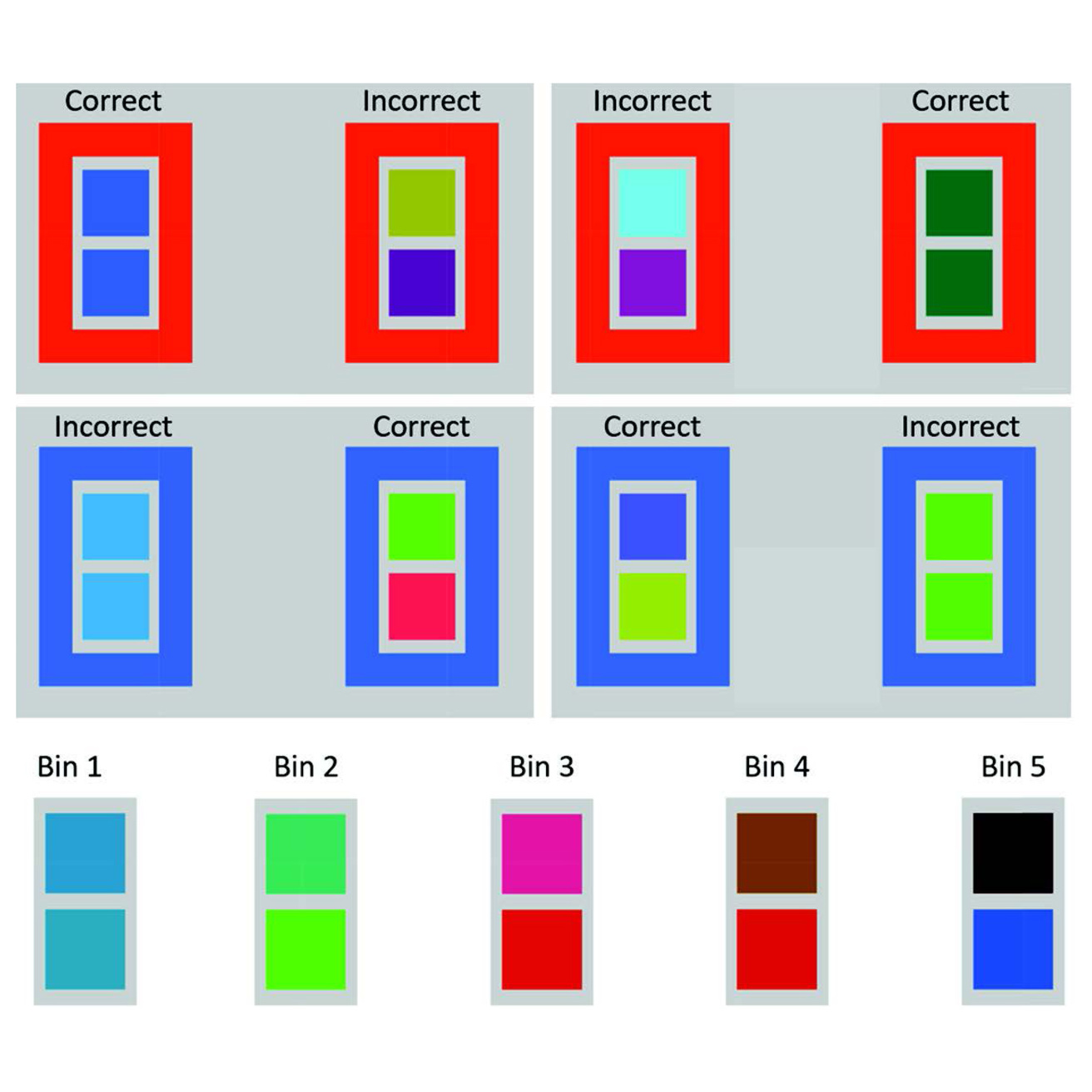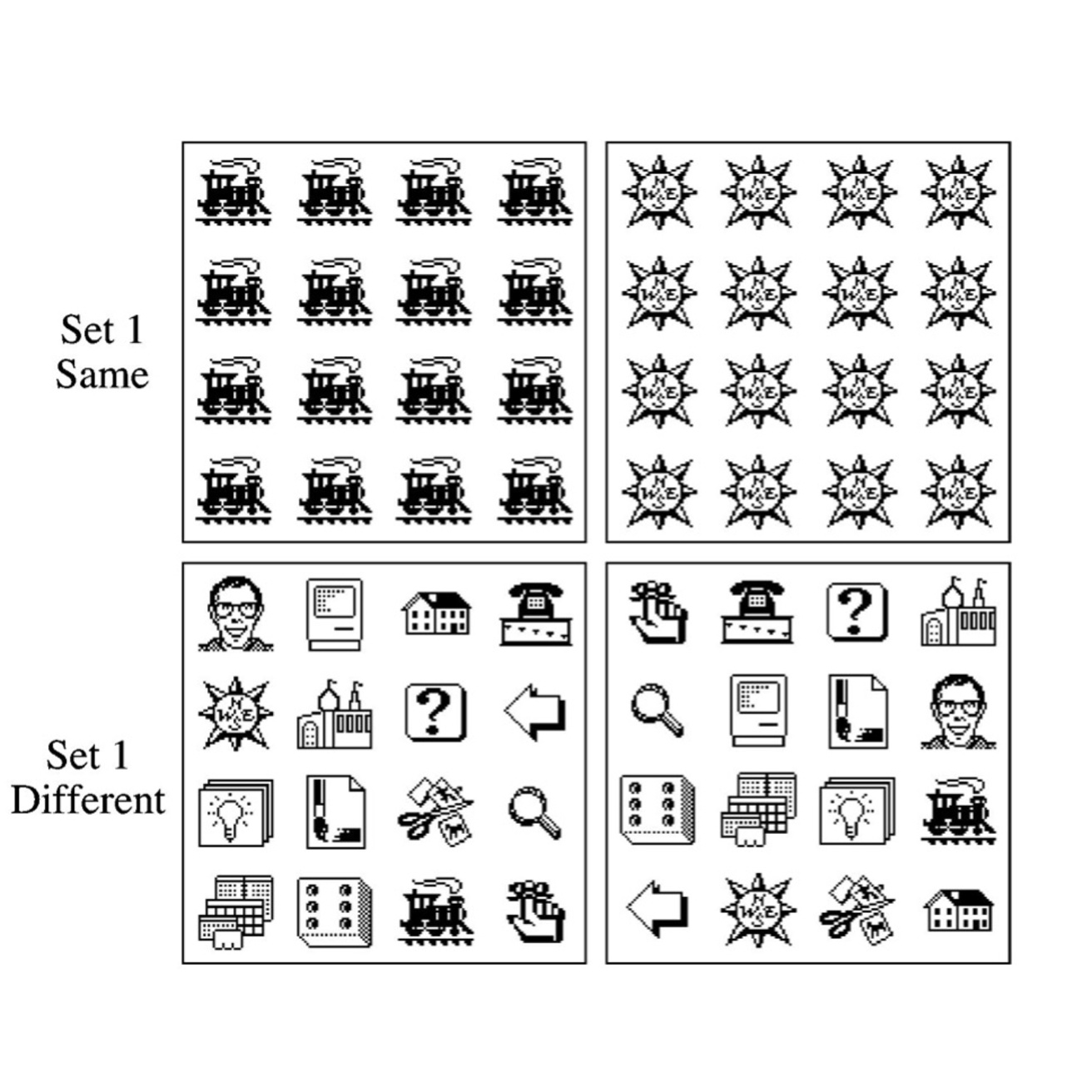
Two-Item Same–Different Discrimination
Research on same–different categorization has shown that mastery of tasks of this kind can be strongly affected by the number of items in the training arrays—for both humans and nonhuman animals. Evidence for two-item same–different categorization in pigeons is decidedly mixed: although some investigations have succeeded, others have failed.
To provide a more convincing resolution of this story, we implemented a series of methodological techniques. First, we used trial-unique stimuli. This manipulation minimized the possibility that pigeons could base their responding on memory of earlier items. Second, we required our pigeons to perform a conditional discrimination; each pigeon had to peck either the same-item pair or the different-item pair depending on the color of each trial background (see examples on the left). Conditional discriminations are substantially more demanding because they require pigeons to attend to the features that discriminate both same and different concepts, rather than just the features that are characteristic of only one concept. Finally, we sought to quantify our pigeons’ same–different categorization behavior by using stimuli that varied along a continuous dimension: color.
All of our pigeons were able to learn the two-item conditional same–different discrimination task to very high accuracy levels. Furthermore, the birds were strikingly sensitive to the discriminability of the items in the different-item pair, exhibiting a systematic improvement in choice accuracy as color disparity increased. Trials on which the colors in the different-item pair were very similar to one another resulted in chance-level responding, whereas trials on which the colors in the different-item pair were very dissimilar from one another supported extremely high (90% correct) accuracy.
We suspect that our pigeons’ successful learning was promoted by our deploying a trial-unique procedure that avoids stimulus memorization. In this way, we demonstrated that stimulus-repetition is not necessary for pigeons’ successful learning in a two-item same–different paradigm.
Diaz, F., O'Donoghue, E. M., & Wasserman, E. A. (2021). Two-item conditional same–different categorization in pigeons: Finding differences. Journal of Experimental Psychology: Animal Learning and Cognition, 47(4), 455–463. https://doi.org/10.1037/xan0000297
